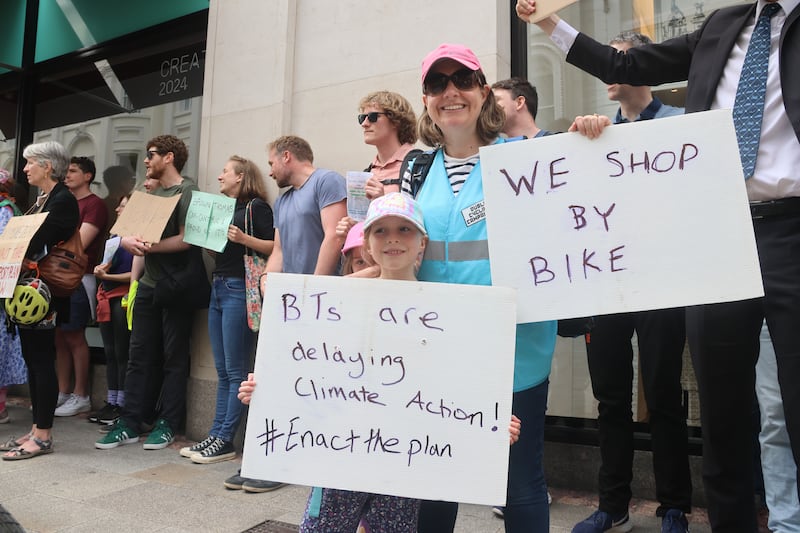Bussiness
Protest outside Brown Thomas calls for implementation of Dublin transport plan without delay

Approximately 100 people took part in a demonstration outside Brown Thomas in Grafton Street calling for the Dublin City Transport Plan to be implemented without delay.
The plan, which will create bus gates at Bachelors Walk and Aston Quay and aims to take a lot of the car traffic out of the city centre, was due to be implemented in August.
Dublin City Council chief executive Richard Shakespeare has now agreed to evaluate the implementation of the plan following a request from businesses in the city. He has told commuter groups he will make a final decision in the week beginning July 22nd.
A request for a delay has also come from junior minister Emer Higgins who has responsibilities for business, employment and retail.
A report by the City Centre Traders Alliance has estimated that the city’s economy will lose almost €400 million a year by 2028 if traffic changes are implemented. Brown Thomas Arnotts are among the groups involved in the alliance.
A number of groups led by the Dublin Commuter Coalition, the Dublin Cycling Campaign and An Taisce want the plan implemented on time and on schedule.
Dublin Commuter Coalition member Gary Marshall said the plan was backed by the majority of councillors and by a majority of business in Dublin city centre.
“We hope that Richard Shakespeare gets this message today. The people want this plan. We don’t want big business interfering in our local democracy any more,” he said.
Protesters chanted “hey Brown Thomas, give us the green light” and “one, two, three four, Dubliners deserve more”.
Una Morrison of the Dublin Cycling Campaign said they had targeted Brown Thomas Arnotts because they believed the store owners and others were thwarting the implementation of the plan on time.
There had been 3,600 submissions to the public consultation on the plan all of them in support of it.

“They have commissioned an economic report which claims there will be a negative impact on their business, but it assumes that all their customers are travelling here by car which we know is not the case,” she said.
“The majority of people who are travelling and stopping in the city centre are travelling by public transport, cycling and walking.”










